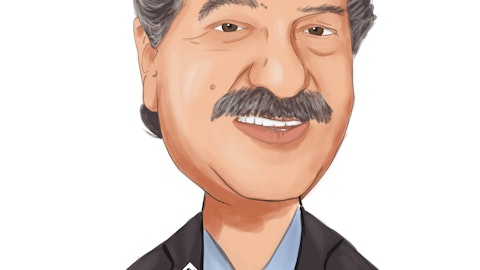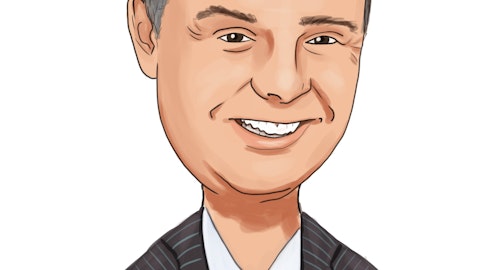So as we think about that quarter end $87.5 million, $88 million run rate. When we roll into the first quarter, with the exception of reminding everyone again, usually for us in the first quarter, we picked up a couple of cents a share of additional costs associated with payroll taxes in the first quarter and stock-based compensation. We usually have another $0.01 per share in incremental seasonal utility costs. Yes, it has started to snow in upstate New York. So the clouds are out and the heat is on. We also expect Chris a 2.5% merit change for our people and we usually do that towards the tail end of the first quarter in the month of March. So we would expect that on a going forward basis. In terms of how we will think about incremental hiring for the organization, given there are some headwinds relative to revenue generation very opportunistic and structural support only that, otherwise we will be thinking about replacement of the folks that we need within our structure, but in terms of adding people to the organization opportunistic and again necessary structural.
Chris O’Connell: Great. That’s helpful. And do you guys have an overall expense growth target either ex or including Salisbury for the full year?
Scott Kingsley: Chris, on a full year basis, probably have to come back to you with that one. I think if we looked at it from a gross-up of fourth quarter full quarter inclusion of Salisbury, if we think about a 2.5% or so change on the salaries and benefits line and then maybe something a little smaller than that for the rest of our non-operating expenses, remembering that we think we got a full quarter worth of Salisbury costs in there. And honestly, we think we have got a full quarter worth of the cost saves that we thought we would get in the Salisbury acquisition.
Chris O’Connell: Great. And then on the seasonal muni decline, given the environment and just how difficult it is. I mean, what’s the confidence level that that volume is able to come back into the first quarter and rebound, and if so, do you think it will come back in the same types of products or will it be higher-yielding types of products?
Scott Kingsley: Yeah. So, Chris, really good question. So, I think, as you know, we don’t bank very, very large municipalities. We tend to bank counties, towns, villages, school districts. So as tax collection start to roll in for them, we would expect that they would be using product mix similar to what they had in the second half of 2023. That being said, most treasury functions are very aware of interest earning opportunities, whether it’s on our balance sheet or someplace else. So I think that goes across our base not even just the municipal base. So I think we are always weary of that. But that being said, I think, the pattern of utilization of how organizations have to cash flow themselves is likely to stay very similar.
So, after people get done making their real estate payments towards the end of January, we would expect those levels to kind of move back to where we were in the fourth quarter. As it relates to the commercial side of our customer base and maybe even the consumer side, we think we saw instances of people using their own money to pay back their debt obligations in the fourth quarter. So people just look at thinking about balance sheet efficiency, despite the fact that there were still short-term yield opportunities out there that we are so much more robust and they enjoyed for the last five years or 10 years. But I think, again, it’s just the line of how does the — how do our customers handle their treasury efficiency. And obviously, we provide tools for them to do that and give them good advice along the lines of, what’s the most productive thing for them to do.
As the cycle starts to evolve and maybe we get into a lower rate cycle, I think that’s why we can actually call to our customer, and say, what’s happening in the market, because we have been having so much dialog with them about what’s happening on the way up.
Chris O’Connell: Great. Really helpful. And last one for me, I know you guys give the fixed and floating breakdown of loans, I think, it’s 39% adjustable or floating. But do you have the percentage of loans that would immediately reprice after Fed Fund cut?
Scott Kingsley: Sure. I think, for modeling purposes, I used $2 billion of loans that would reprice immediately with the change in Fed Funds, which presumes an immediate and correlation down in SOFR, in terms SOFR. So it’s mostly commercial loans for us. There’s probably some home equity type instruments that are out there, but for us, relatively small.
Chris O’Connell: Great. Thanks for taking my questions.
Scott Kingsley: Appreciate it, Chris. Thank you.
John Watt: Thanks, Chris.
Operator: Thank you. [Operator Instructions] One moment for our next question. Our next question comes from Alexander Twerdahl with Piper Sandler. Your line is now open.
Alexander Twerdahl: Hey. Good morning all.
Scott Kingsley: Good morning, Alex.
John Watt: Good morning.




